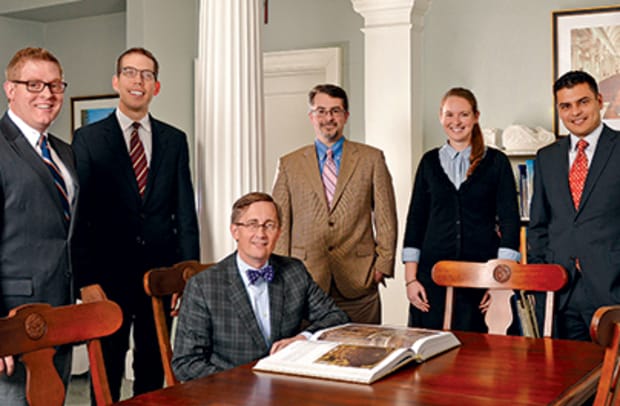Northwestern University Music Academy
Tag Archives: D7/3
- Home
- Posts tagged "D7/3" (Page 3)

Cow to Cone
What makes #icecream so irresistible? 🍦😋🍦It’s the fascinating #chemistry at play, balancing fat globules, air & ice crystals to perfection – basically, ice cream isn’t just a treat, it’s a chemistry masterpiece!😉Check out this cool visual by @compoundchem @ndbrning pic.twitter.com/1qKLQaBF8k
— Max Planck Society (@maxplanckpress) August 16, 2024
Vintage icecream scoops.
[📹 dustyoldstuff]pic.twitter.com/3oKRj92ST6
— Massimo (@Rainmaker1973) August 18, 2024
Climate Psychosis
“The only thing worse than religion is lack of religion”
“It is impolite to make fun of other people’s religion.
If you cannot persuade a population to buy into your oligarchic ambitions
then turn those ambitions into a religion.”
— Michael A. Anthony, P.E.
University of Michigan, ’83 and ’88 (Retired)
A conversation with Bjorn Lomborg, a visiting fellow at the Hoover Institution, the president of the Copenhagen Consensus Center, and one of the foremost climate experts in the world today. His new book — “False Alarm: How Climate Change Panic Costs Us Trillions, Hurts the Poor, and Fails to Fix the Planet” — is an argument for treating climate as a serious problem but not an extinction-level event requiring such severe and drastic steps as rewiring a large part of the culture and the economy.
Starting soon! https://t.co/JL03EIEMqo pic.twitter.com/Ttpp4TA8jr
— Wendy Bohon, PhD 🌏 (@DrWendyRocks) December 28, 2023
Readings
Brookings: Michael Crichton and Global Warming
The alarmist reddening of weather maps is a perfect visualisation of how 5th generational warfare works. We’re dealing with an information war and the battlefield is our mind. @RWMaloneMD pic.twitter.com/nTBv5yhYbS
— Eva Vlaardingerbroek (@EvaVlaar) May 23, 2023
Chanson de Nuit, Op. 15, No. 1
Sir Edward William Elgar (2 June 1857 – 23 February 1934) was an English composer, many of whose works have entered the British and international classical concert repertoire. Among his best-known compositions are orchestral works including the Enigma Variations, the Pomp and Circumstance Marches, concertos for violin and cello, and two symphonies. He was appointed Master of the King’s Musick in 1924.
Submissions are now open for the 4th International Audio Engineering Society Acoustics and Sound Reinforcement Conference!
Learn more and submit your paper now: https://t.co/ueFrLYr6Vx#AESorg #audioengineering #acoustics #soundreinforcement pic.twitter.com/zSnAgR8Chn
— Audio Engineering Society (@AESorg) July 13, 2023
“Stopping By Woods on a Snowy Evening”
Randall Thompson’s “Frostiana” is a choral cycle based on the poems of Robert Frost. The cycle consists of settings for mixed chorus and piano, and it was premiered in 1959. “Frostiana” was commissioned to celebrate the bicentennial of the town of Amherst, Massachusetts, and it features seven of Frost’s poems set to music by Thompson.
“Stopping by Woods on a Snowy Evening” is one of the poems included in the “Frostiana” cycle. The composition captures the reflective and contemplative mood of Frost’s poem, where the narrator pauses to admire the beauty of a snowy evening in a quiet forest. Randall Thompson’s musical setting adds another layer to Frost’s words, enhancing the emotional impact of the poem.
Thompson’s approach in “Frostiana” is characterized by its accessibility and tonal clarity. His settings aim to convey the meaning and atmosphere of Frost’s poetry through the expressive power of choral music. The entire “Frostiana” cycle is a celebration of both Thompson’s skill as a composer and Frost’s enduring contribution to American literature.
“Stopping by Woods on a Snowy Evening”
By Robert FrostThis is one of my favourite English poems. It is vivid, melancholic, and wistful. The imagery and the final lines have stuck with me for years.
And miles to go before I sleep… pic.twitter.com/2ANM3CeTjQ
— Learn English with Alex (@AlexEngVid) November 25, 2023
Duncan Stroik Architect
“The ideal architect should be a man of letters, a skillful draftsman, a mathematician,
familiar with historical studies, a diligent student of philosophy, acquainted with music,
not ignorant of medicine, learned in the responses of jurisconsults,
familiar with astronomy and astronomical calculations.”
Duncan G. Stroik is a practicing architect, author, and Professor of Architecture at the University of Notre Dame specializing in religious and classical architecture. Gathered here are images from Christ Chapel, Hillsdale College Michigan. His award-winning work includes the Our Lady of the Most Holy Trinity Chapel in Santa Paula, California, the Shrine of Our Lady of Guadalupe in LaCrosse, Wisconsin, and the Cathedral of Saint Joseph in Sioux Falls, South Dakota.
A frequent lecturer on sacred architecture and the classical tradition, Stroik authored The Church Building as a Sacred Place: Beauty, Transcendence and the Eternal and is the founding editor of Sacred Architecture Journal. He is a graduate of the University of Virginia and the Yale University School of Architecture. Professor Stroik is the 2016 winner of the Arthur Ross Award for Architecture. In 2019, he was appointed to the U.S. Commission of Fine Arts.
Abiit sed non oblita | Margaret Wise Brown
This content is accessible to paid subscribers. To view it please enter your password below or send mike@standardsmichigan.com a request for subscription details.
New update alert! The 2022 update to the Trademark Assignment Dataset is now available online. Find 1.29 million trademark assignments, involving 2.28 million unique trademark properties issued by the USPTO between March 1952 and January 2023: https://t.co/njrDAbSpwB pic.twitter.com/GkAXrHoQ9T
— USPTO (@uspto) July 13, 2023
Standards Michigan Group, LLC
2723 South State Street | Suite 150
Ann Arbor, MI 48104 USA
888-746-3670






![How easy it is to make people believe a lie, and [how] hard it is to undo that work again! - Mark Twain](https://www.azquotes.com/vangogh-image-quotes/48/62/Quotation-Mark-Twain-It-s-easier-to-fool-people-than-to-convince-them-48-62-03.jpg)













